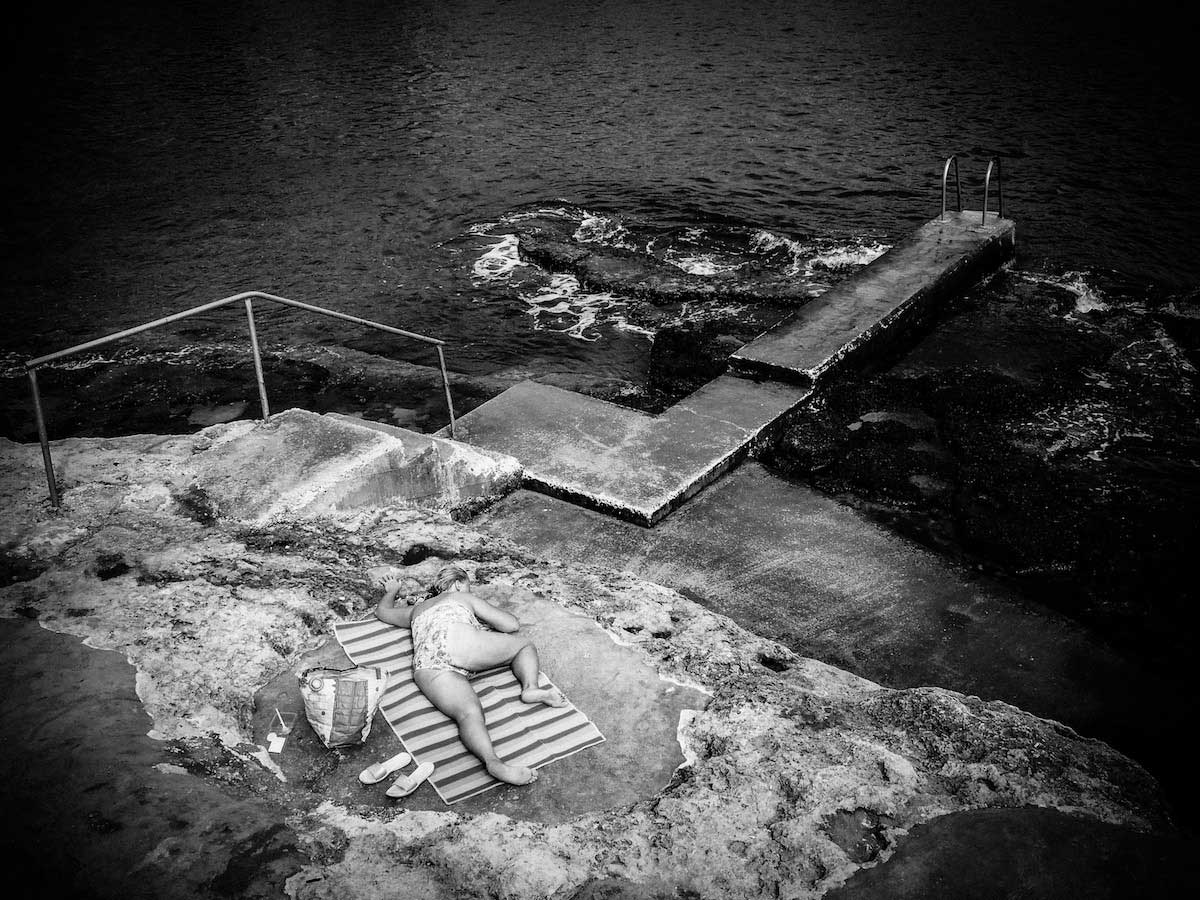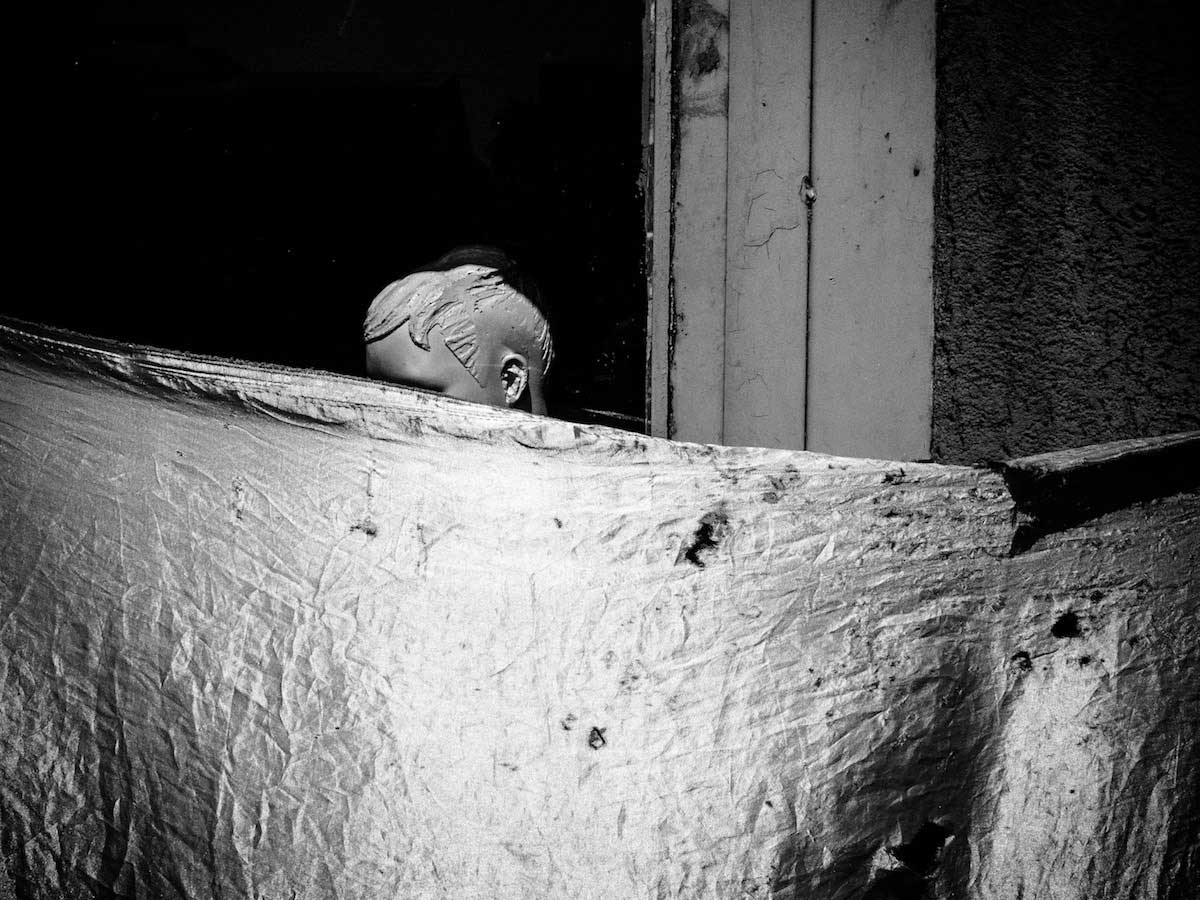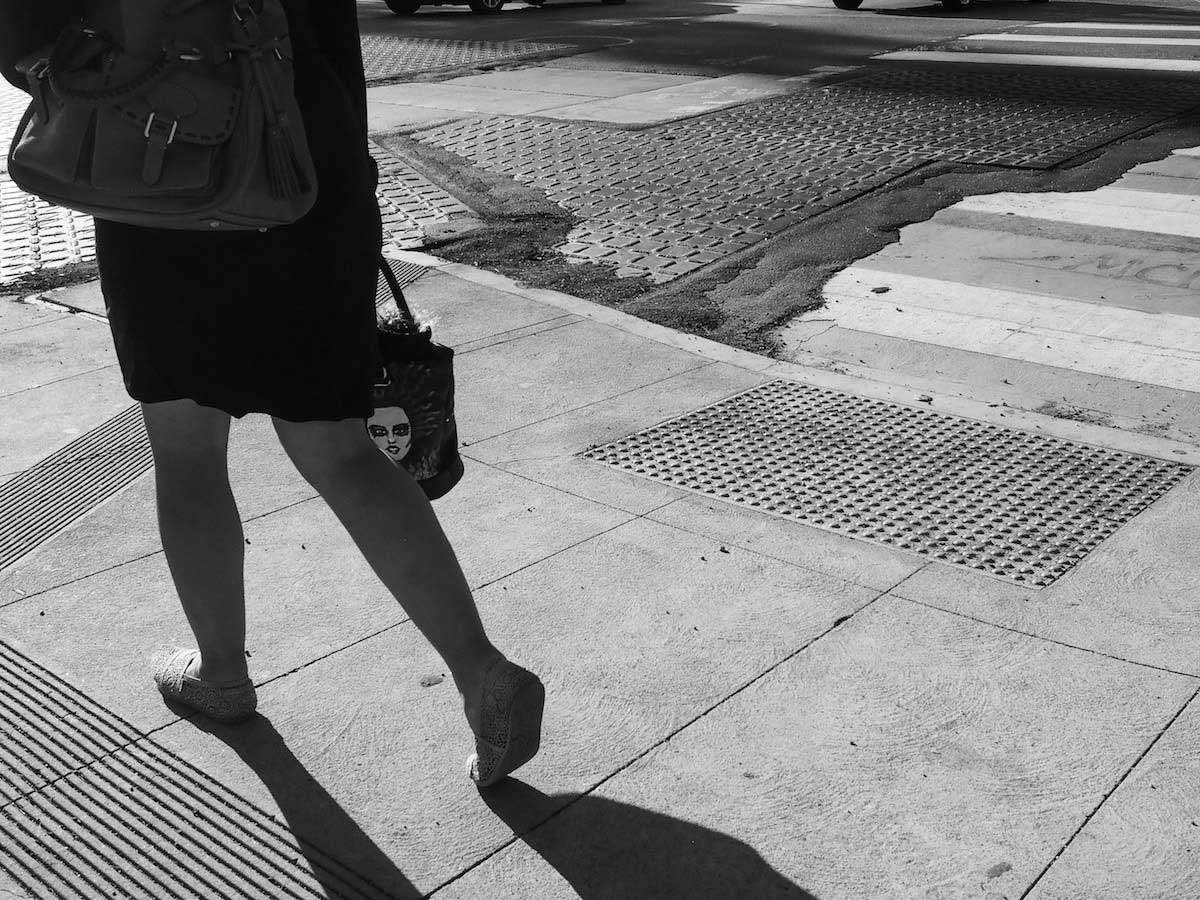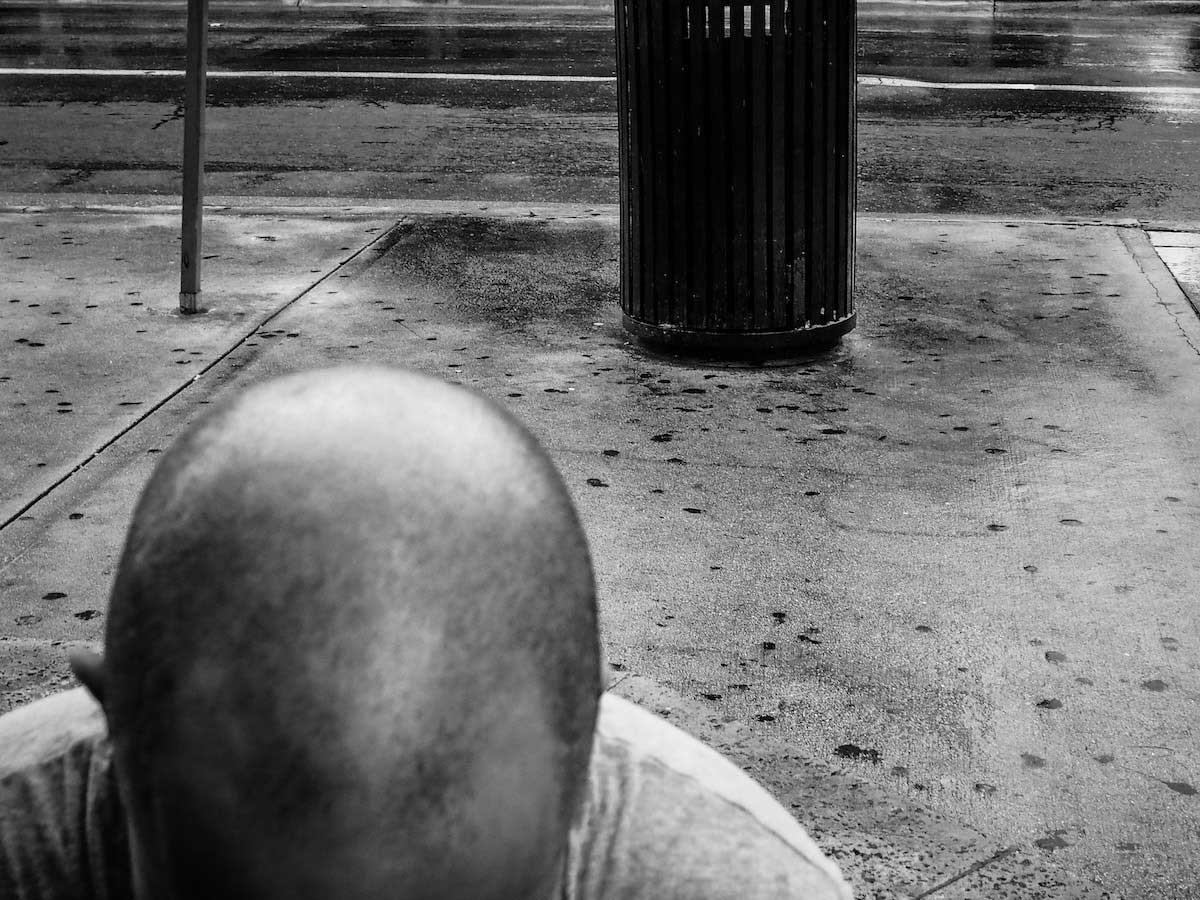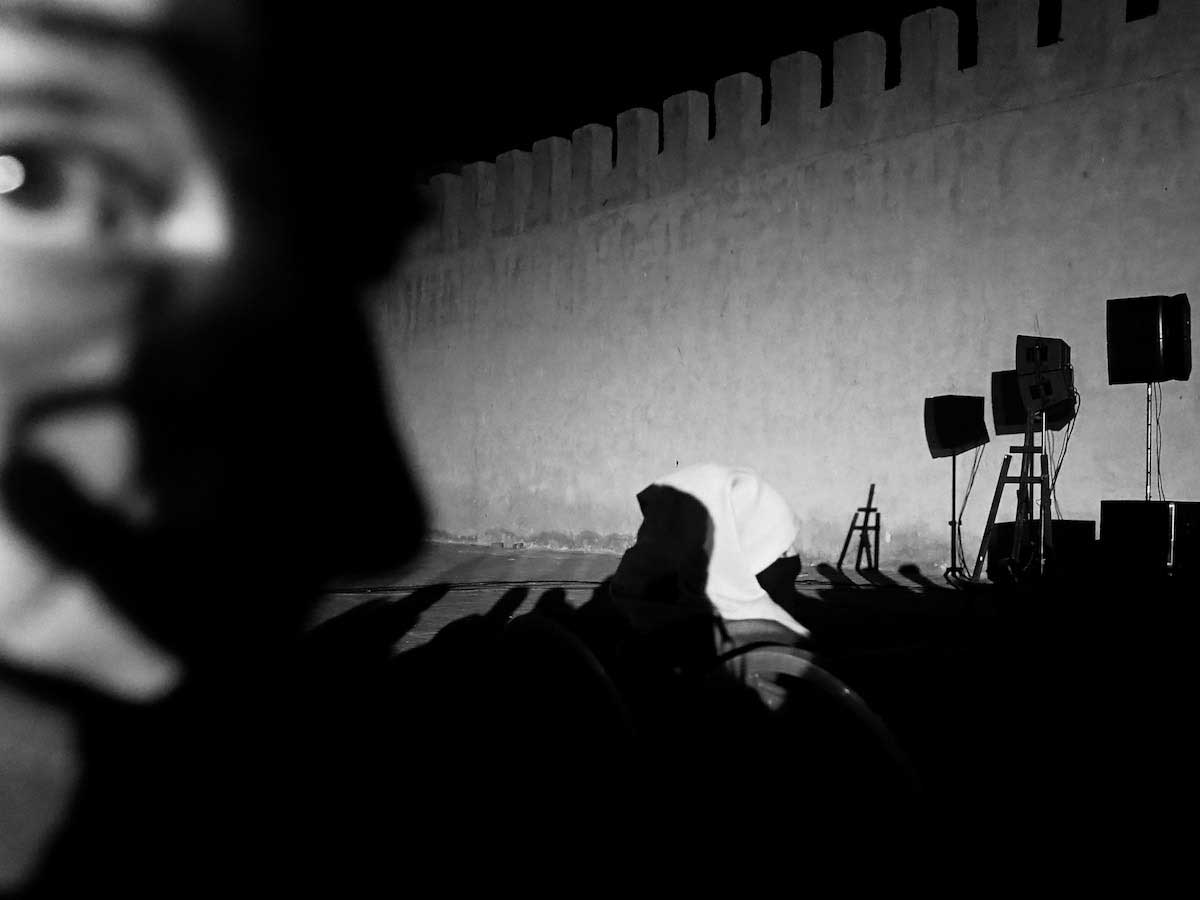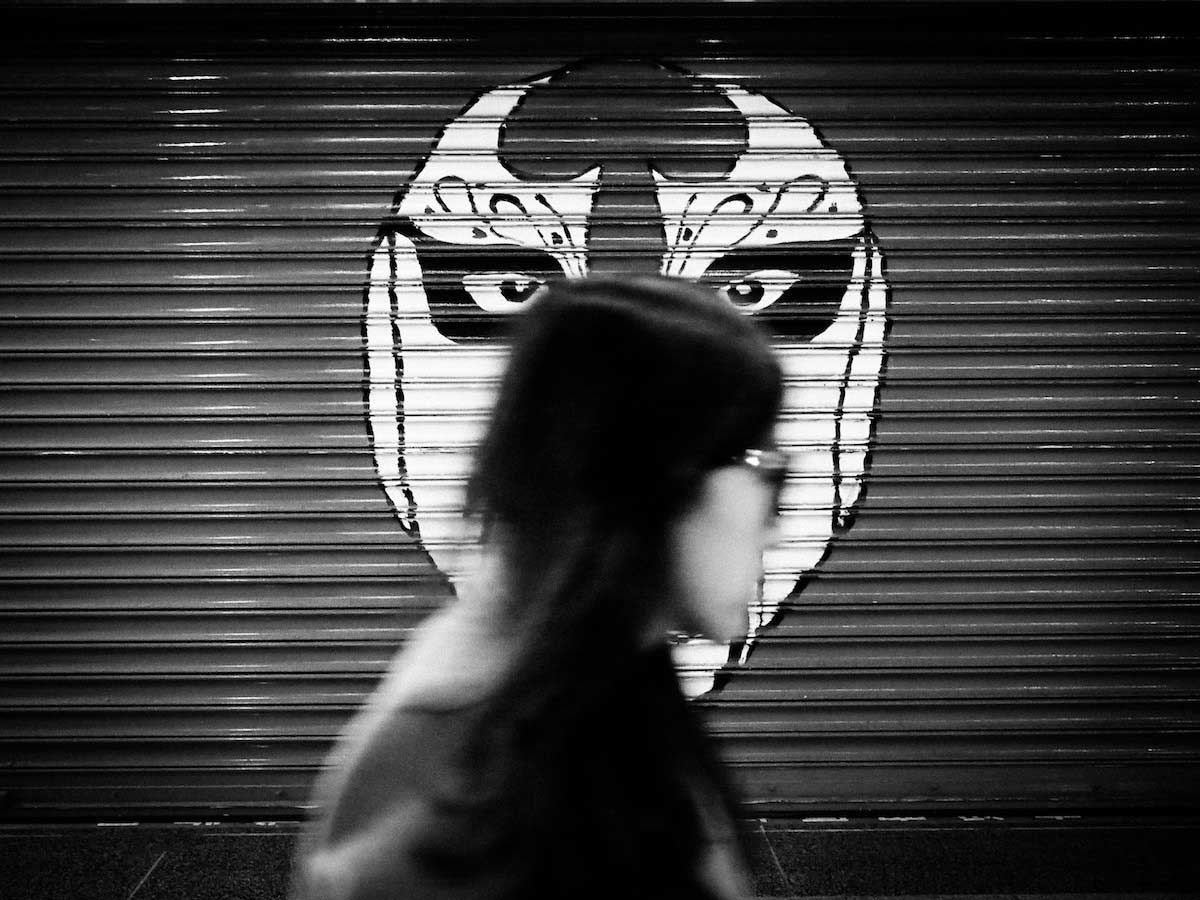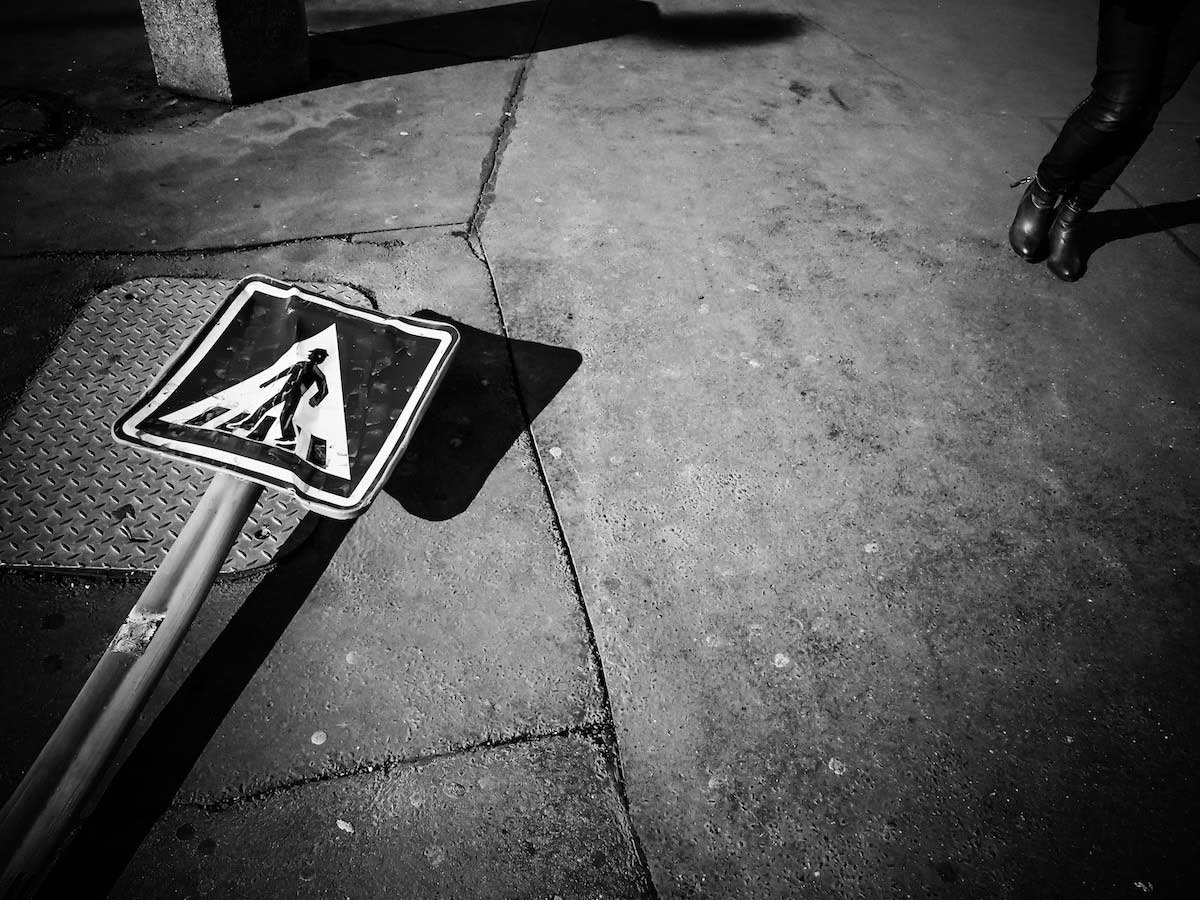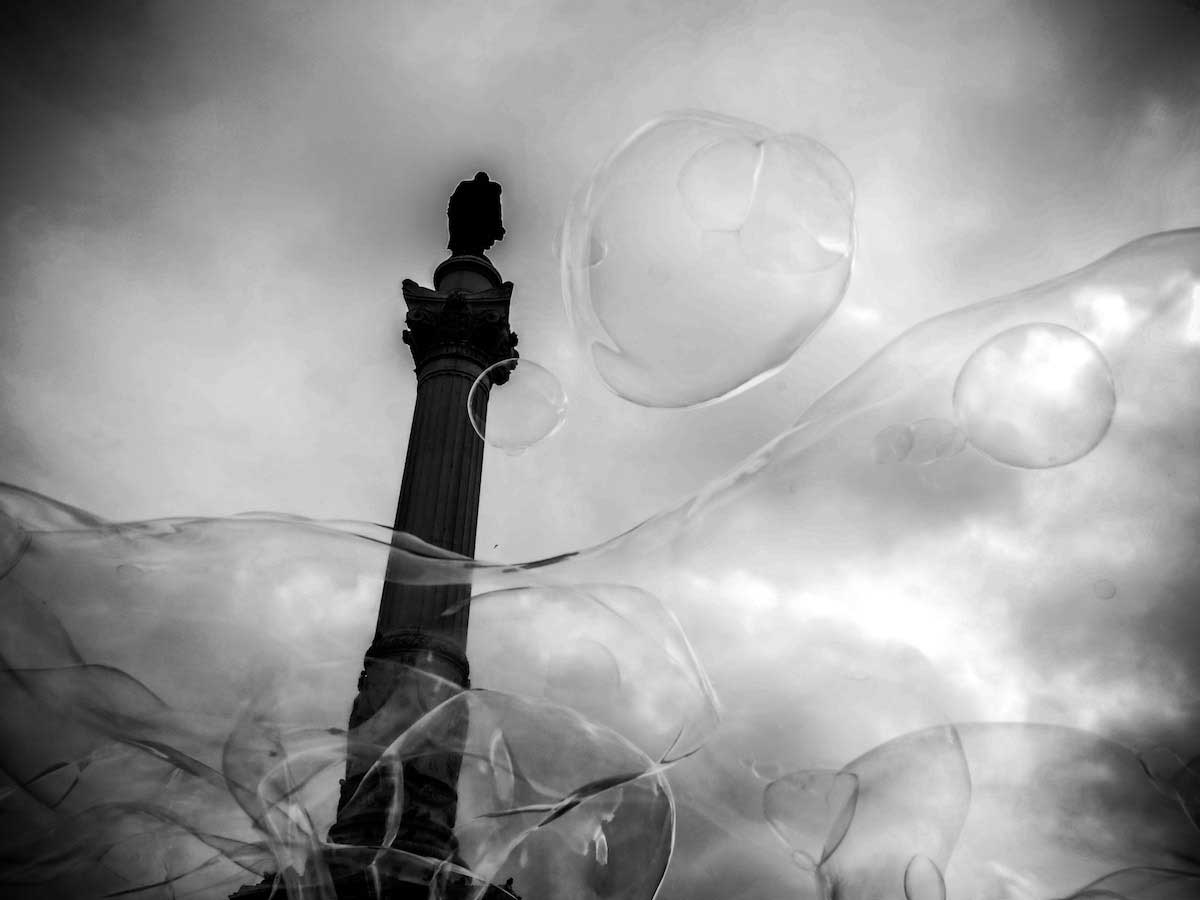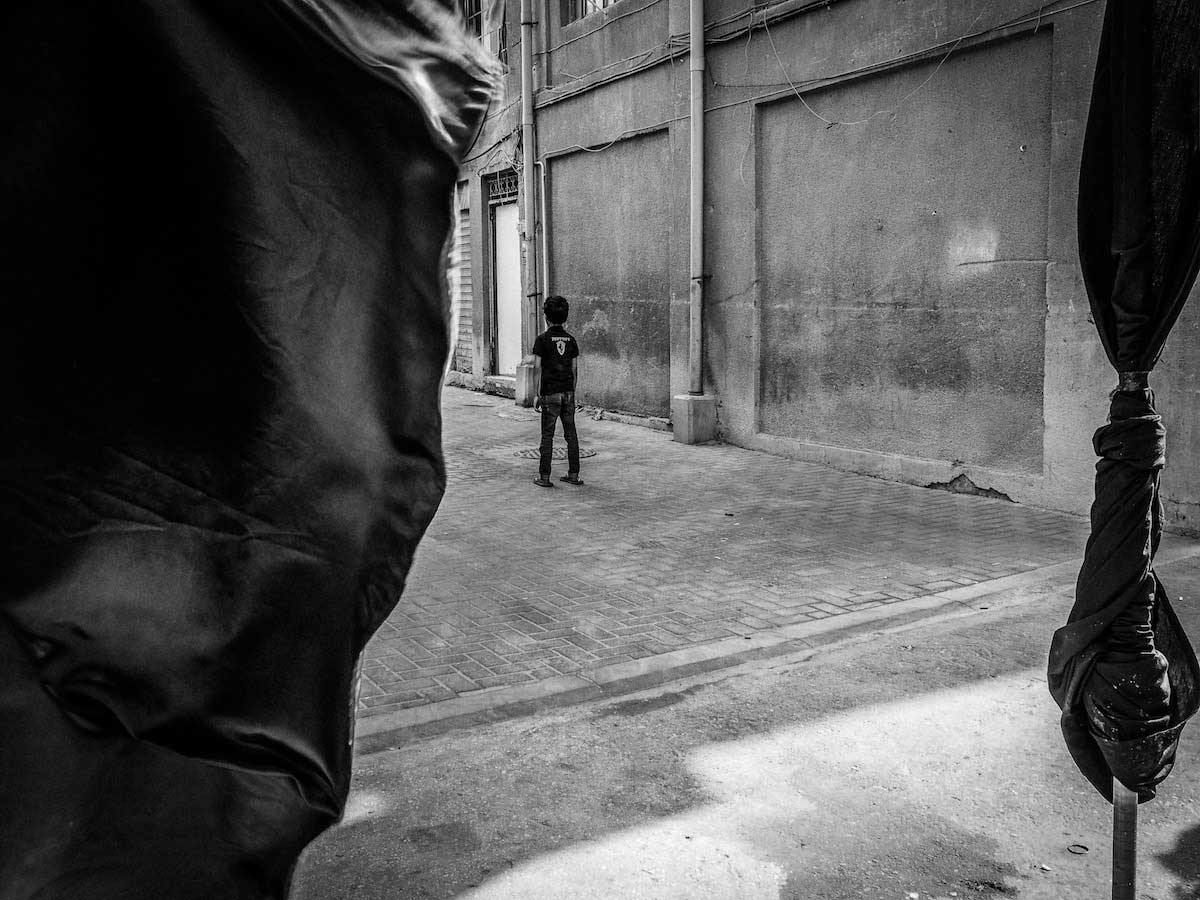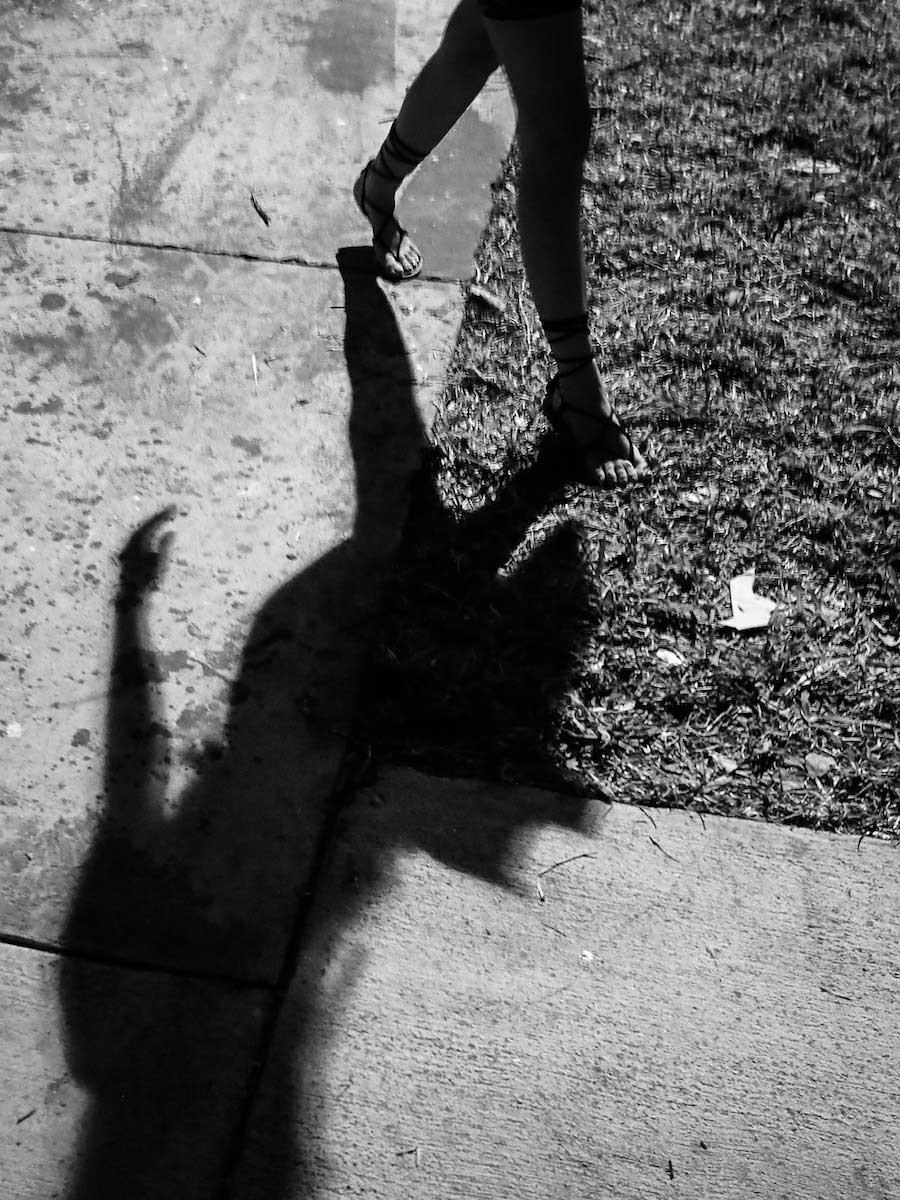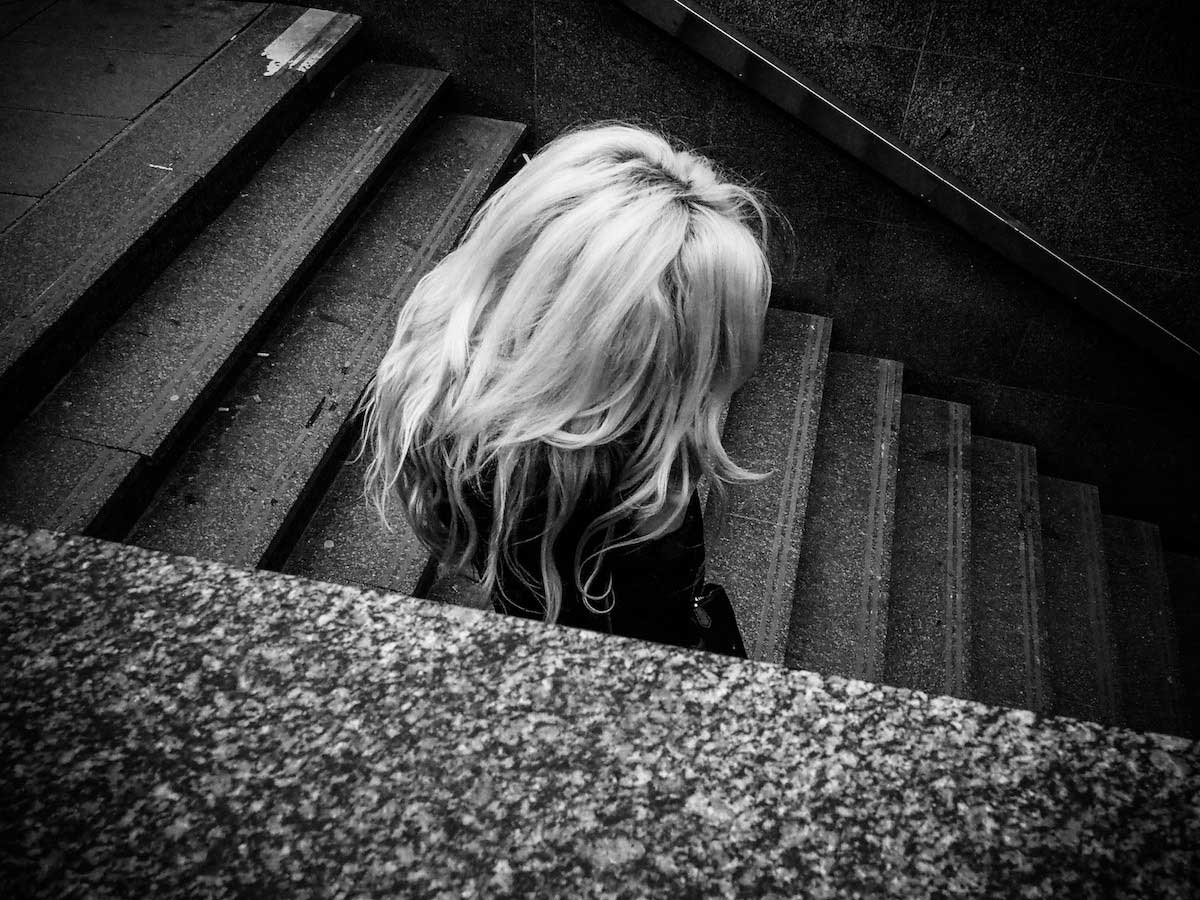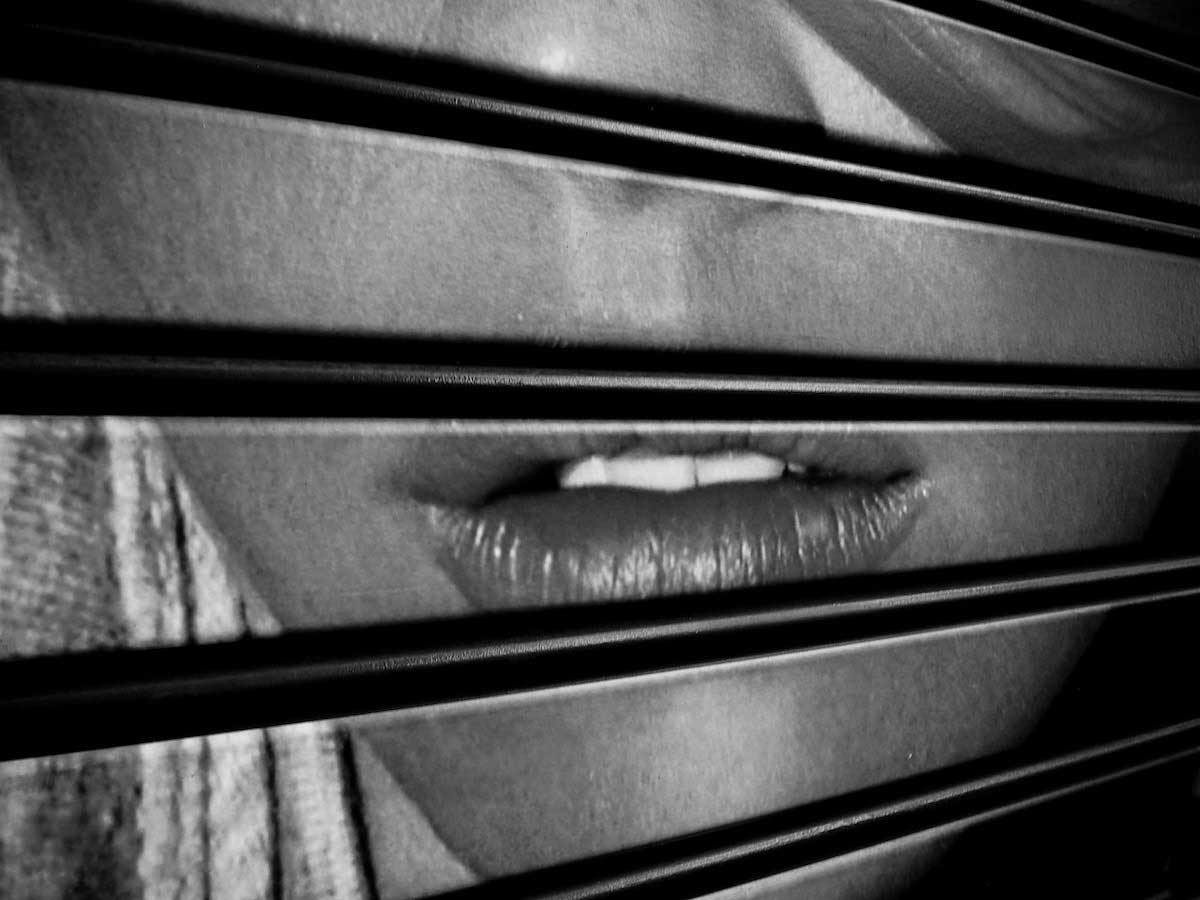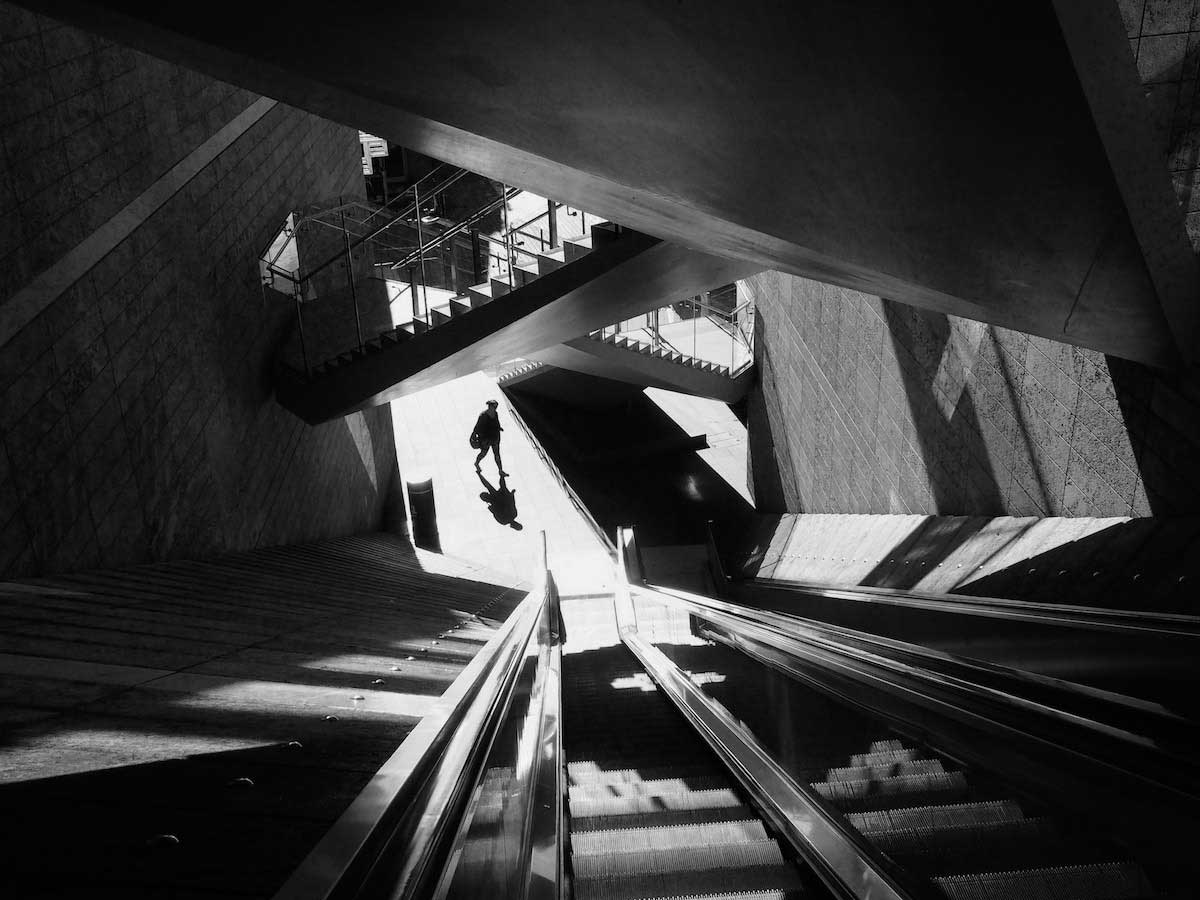FRESNEL is a photographic research of the “mystery” in the streets. From day to night, from east to west, dipped or at a distance, it is a spotlight on anonymous streets, where meetings are woven and destinies intersect.
The city is the theatre of order and disorder, of black and white, of fullness and emptiness. It stands in the midst of a daily news with an out-of-scope illness and metastasized through a destruction of nature, a social fight, extremism of all kinds, money openly featured. In this context, the dream, the fantasy and the photographic act become more than ever a little hope for a small balance, a small breath during a walk.
FRESNEL refers to the cinema’s famous projectors and which have particularly equipped the film set of the black movie. This type inspires my plastic photographic approach while giving me some ingredients about suspense, life, death, fatal woman, city, body and intrigue. Then, aesthetically a contrasting image, light-dark, black and white. Fresnel is the surname of the French physicist Augustin Fresnel, inventor of this concept of lighting with a stepped lens. Therefore, the FRESNEL project becomes itself, a particular lighting on the street. Each photograph is to be considered as an incarnation of an entire sequence in the field, the whole constitutes a patchwork film, a generic and singular mosaic street that turns into a group of moments that is collectively dark, deep, mysterious, sensual, enigmatic, unexplained, obscure, tangible and surreal.
Real is a related term of surreal. As adjectives, the difference between real and surreal is that real can be characterized as a confirmation of truth while surreal is like an experience in a dream: fantastic and incongruous. By the nature of my concern, I have a peculiar passion for urban aesthetics and town poetics. I have the profound conviction that every secret in the city has a dense and living imagination that makes its spaces, its objects, its inhabitants and their representations count a lot when art is concerned. Thus, the approach of my plastic photography naturally focuses on the street. I have always been interested in all artistic forms, out of curiosity and inspiration. Two moments in the history of art has particularly captivated me: “surrealist painting” and “film noir”. They accompany me secretly and permanently like a soft kiss when I am in a city in the midst of the “decisive moment”. For a street photographer, there is evidence that forms and contents are bound in his mind. He advocates a perception of the subject he encounters, he narrates and how he narrates it, is impeccable.
However, it is not a matter of emphasizing the form on the merits and falling into formalism but overcoming this division. I consider a photograph as a visual art when it embodies a sublime encounter. Nonetheless, a dead drunken night-owl eating a quinoa yogurt, a black lace backpack worn by a white bear, will never — make a fine and pure plastic photography. The unprecedented opportunity is to be considered just as the starting point for a possible composition with the risk of missing the chance that arises. Thus the street is made. The risk is part of it and it is the spell of this chosen axis. The street as a field of perception and plastic creation is more than ever a return to an innocent form, in its will to experiment: capture sparks of existence, making each plan an adventure, To be there by framing (in the sense of removing instead of filling). The challenge is to go to an encounter that of the “real”, which arises like a flash, in the unexpected but becomes “surreal” through the lens. As a result, the photographic act evolves more than ever towards a moment of surrealist enthusiasm and magic, and squarely in the quest for a plastic mirage.
In relation to Film noir (French for “black film” (literal) or “dark film”), it is a cinematic term used primarily to describe stylish Hollywood crime dramas. Their period is generally regarded as extending from the early 1940s to the late 1950s. The film noir aesthetic represents a big inspiration for my FRESNEL project. So, one of the techniques used was the low-key lighting which causes the effect of obscuring the action and deglamourizing the star so that the composition becomes more important than the actor. Earlier American movies had focused on the star. The use of night and shadows emphasizes the cold and the darkness. In FRESNEL, this mood is also fortified through an involved arrangement, often disjointed and fragmented, which emphasizes the feeling of lost time and despair. The wide-angle (28 mm or 35mm lenses) participated in making the space distorted and the viewer disoriented. I use oblique lines more often. This gives an unsettling impression and it serves to disorient the viewers and create a mood of uneasiness, alienation, and loneliness in FRESNEL. Accordingly, the dark and uneasy visual expressions emphasize the themes.
However, what is the relationship between the FRESNEL project and surrealism mentioned above as my second major inspiration? Actually, there are multitudes of definitions of Surrealism, but in general, they use images of the subconscious mind and dreams to express an authentic self and thus visualize a more true reality, the “surrealist”. This expression opens the door to the subconscious mind of the artist. André Breton (the theoretician of the movement) said: “The idea of surrealism tends simply to the total recovery of our physical strength”. I would like to point out that in the FRESNEL project, they are not manipulated images with obvious surrealist properties. I do not use collage or retouching, contrary to a tradition rooted in the surrealists. But I rather defend the idea that the camera itself, in the surrealist vision is not there to record the reality but to transform it and make it strange. Let us not forget that reality may be stranger than fiction. Irish writer Oscar Wilde said: “The true mystery of the world is the visible, not the invisible”.
Surrealism, a word invented by Guillaume Apollinaire, is an aesthetic movement that is built on several factors. It is a search for the new, a need for escape, a change in the perception of things. Surrealist photography – as a medium in its own right, does not exist in itself. The official beginning of the surrealist photography dates from Breton’s Manifesto in 1924. However, the Surrealists all agree that the discovery of photography is itself a matter of surrealism: the fact of being able to freeze the city and to make a still image of the world around us. It is important to understand that Surrealism is not a school in itself but rather a way of being, a way of doing things. It is a concept, an interpretation of the elements, the content. It does not practice an art of imitation of the object. Creating a new world in Instituting between the elements represented and a new order: it is the way which gives the spirit all its rise: the mimicry between different elements, the stop of movement, the find. These are general aesthetic features that photography has to reveal. Nonetheless, the judgment of who is a surrealist is very subjective. In fact, surrealism is a style that can be transmitted in several directions at will, since it has no dogmatic character. It is a way of thinking that guides our perception towards the unconscious and the imaginary.
Personally, since I have considered street photography as a surrealist art, since I consider myself, without taboo, as a surrealist photographer, this gave me an incredible freedom and unblocked my artistic approach in the city. The photographic art practiced in small, free and broken format, solicits objective chances. It favors the binding of dissimilar objects in the frame of the image. As explained above, photography offers immense potential for automated and eclectic creation adulated by literary and pictorial surrealism. Today, the freedom afforded by digital cameras and the drop in the prices of memory cards multiplies these possibilities, provided the photographer releases and leaves his imagination free. In FRESNEL it is the photo that makes its reality. For reality in itself is not surreal. Photography could also translate the imaginary and the unconscious into its study at random. All this makes it possible to explore the visual unconscious. Some will postulate that to arrive at photographic surrealism, it will be necessary to result in some original techniques such as the fish-eye lens, overprinting, deformation of tons, photoshop, etc. However, as it concerns mine niche in photography, I do not conform to such techniques. As far as I am concerned, I remain faithful to my technical minimalism (simple camera, fixed lens). Less is more! It’s helpful to have less equipment in my camera bag. For shooting with less weight on me, enables me to be more focused and able to shoot for a longer period of time without being tired. On the other hand, I continue to furrow the streets of the world, in order to leave open the door of hazard and to disguise the eye and the ideas. [Official Website]
